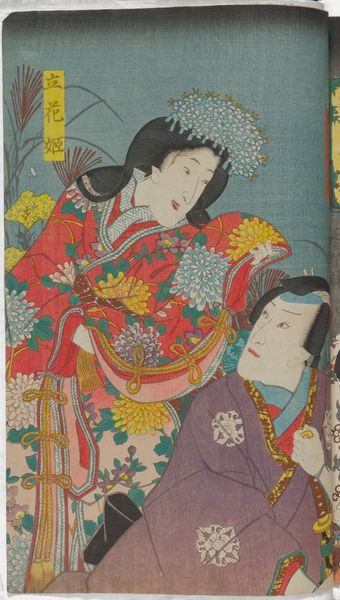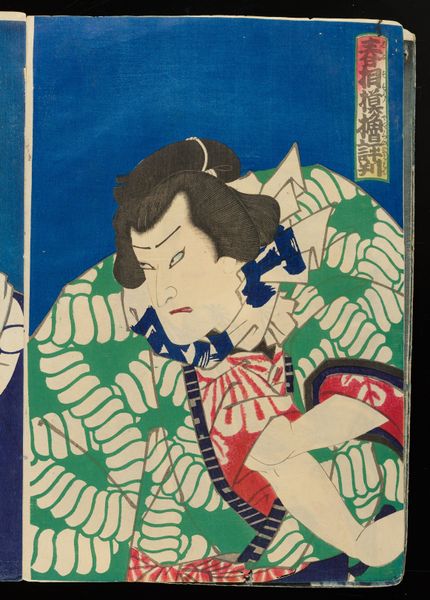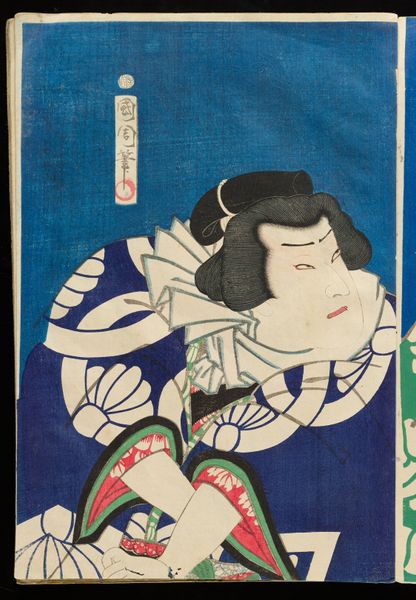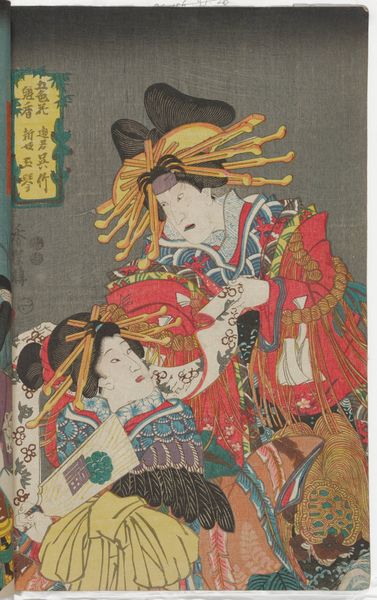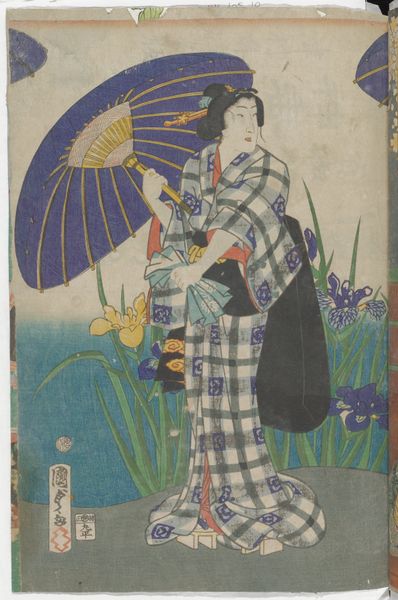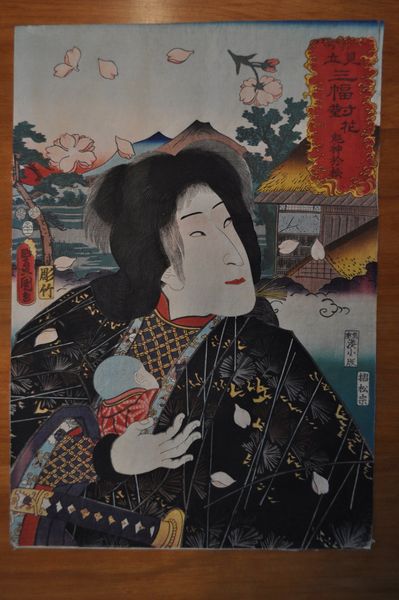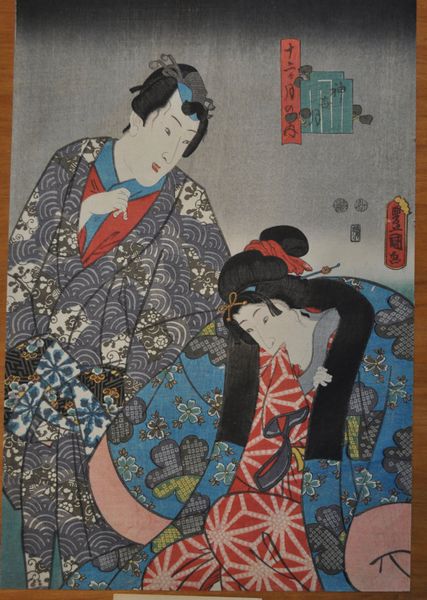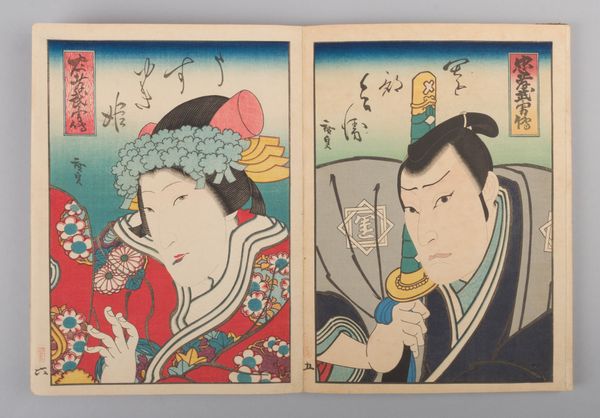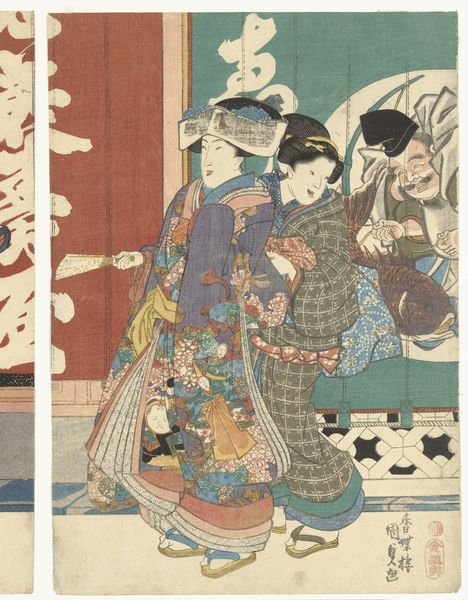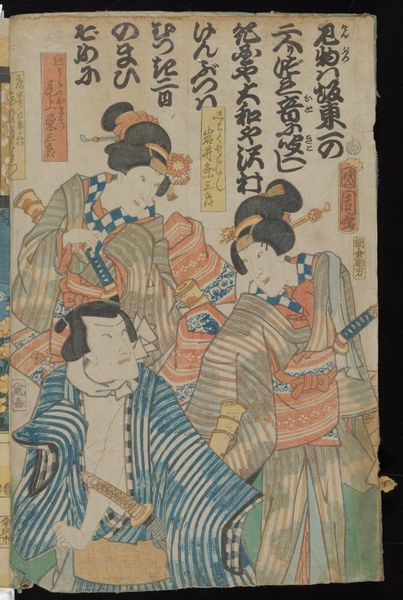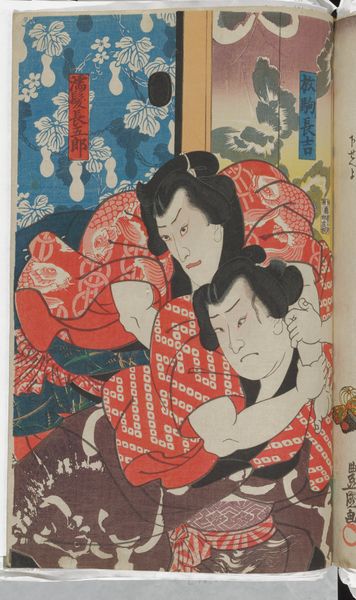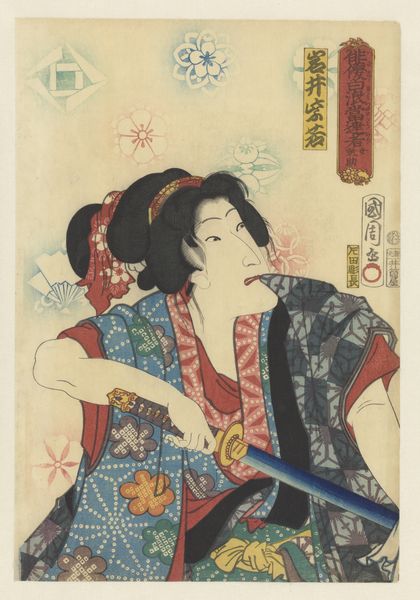
(Lovers Hiding in Rain from an Unidentified Kabuki Play) 1851
0:00
0:00
print, ink
#
portrait
#
water colours
#
narrative-art
# print
#
ukiyo-e
#
japan
#
figuration
#
ink
Dimensions: 14 3/8 × 9 5/8 in. (36.5 × 24.5 cm) (image, sheet, vertical ōban)
Copyright: Public Domain
Curator: This is a woodblock print by Utagawa Kunisada, created around 1851. It's titled "(Lovers Hiding in Rain from an Unidentified Kabuki Play)" and it now resides at the Minneapolis Institute of Art. Editor: It feels both intimate and theatrical. I'm struck by the texture – that delicate line work giving the impression of falling rain, juxtaposed against the solid blocks of color in their clothing. Curator: Yes, Kunisada was a master of ukiyo-e, "pictures of the floating world." Think about the cultural significance of Kabuki theater in Edo-period Japan. This image isn't just a portrait, it's capturing a story, a mood, anxieties about love and honor... Editor: The colors draw me in: the pale skin tones set against the darker indigo and purple shades of their garments, there's even a kind of subtle luxury implied in those patterns. Considering the means of production - the wood carving process, the layering of inks- one can appreciate how demanding such color combinations could be for artisans. Curator: Indeed. Color symbolism was quite deliberate. Indigo could be associated with faithfulness or even sorrow. And don’t overlook that tiny bird caught mid-flight. Birds often symbolize freedom, escape... Is it a reflection on the characters or the feeling in the narrative itself? Editor: Good eye. Also consider the paper itself. The tactile quality of Japanese paper – "washi" – made from mulberry fibers. That choice contributes so much. The print medium democratizes art in a sense, making these images more accessible, commodities even, distributed widely through urban centers. Curator: Precisely! Think about these prints as cultural currency, visual records reflecting aspirations, anxieties, societal values related to the very popular entertainment culture. These images allow a deeper look into the human experience. Editor: Kunisada and the artisans behind him offer us a layered record. A glimpse of labor practices, of material availability and choices, as well as aesthetic and social context. Curator: It all goes together and is fascinating! I now see the performance is just the beginning to fully understand these pieces.
Comments
No comments
Be the first to comment and join the conversation on the ultimate creative platform.
